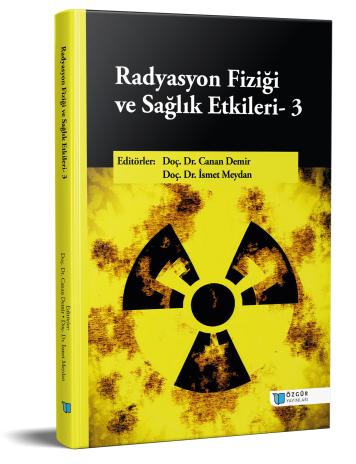
Radionuclides Used in Brachytherapy and Their Properties
Chapter from the book:
Demir,
C.
&
Meydan,
İ.
(eds.)
2025.
Radiation Physics and Health Effects-3.
Synopsis
Brachytherapy is a specific form of radiation therapy that requires the placement of a radioactive isotope near the macroscopic tumor and/or adjacent tissue. Compared to external beam radiotherapy, brachytherapy has the potential to deliver an ablative dose of radiation directly to the tissue area in a short period of time. Due to this characteristic, brachytherapy provides the advantage of a rapid dose fall-off, thereby protecting healthy tissues by minimizing complications in organs at risk. In brachytherapy, catheter implantation is performed, and radioactive sources are administered to the patient intraluminally, intracavitarily, or interstitially via applicators. From the perspective of dose rate classification, there are several brachytherapy techniques: low dose rate (LDR, 0.4–2.0 Gy/h), pulsed dose rate (PDR, 0.5–1.0 Gy/h), medium dose rate (MDR, 2–12 Gy/h), high dose rate (HDR, >12 Gy/h), and ultra-LDR (permanent implants, 0.01–0.3 Gy/h). HDR is performed using a removable catheter and radioactive sources such as Iridium-192 (¹⁹²Ir) and Cobalt-60 (⁶⁰Co), whereas LDR brachytherapy is implemented with permanent seeds like Iodine-125 (¹²⁵I), Palladium-103 (¹⁰³Pd), and Cesium-131 (¹³¹Cs).
This study aims to contribute to the literature by examining certain radionuclides used in brachytherapy (¹³⁷Cs, ¹⁹²Ir, ¹²⁵I, ¹⁹⁸Au, ²⁴¹Am, ¹⁰³Pd, ¹⁴⁵Sm, ⁶⁰Co, ²²⁶Ra, ¹⁶⁹Yb) and their properties. In the study, the advantages and disadvantages of these radionuclides are discussed with reference to previous research. Some studies have proposed alternatives to the radionuclides used in brachytherapy and developed new devices to enhance radioprotection for both patients and practitioners during their application. There is substantial evidence supporting the significant role of brachytherapy in the global oncology field. Therefore, it is expected that brachytherapy will become a valuable component of radiotherapy for many malignancies in the future. Considering the benefits of brachytherapy, it is believed that the number of treatment centers should be increased to provide therapy for more patients.

